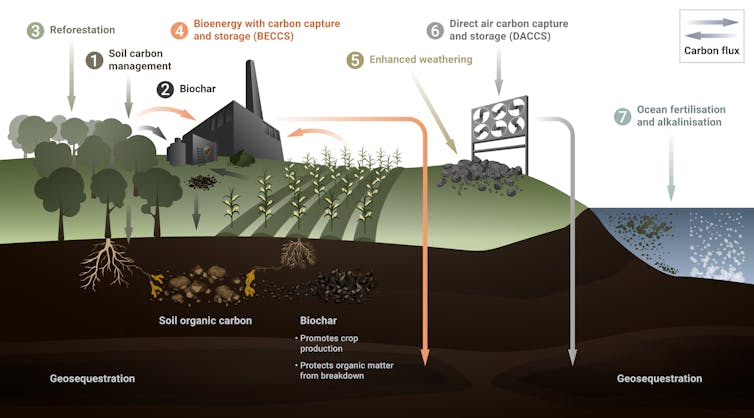
Annette Cowie, University of New England; Han Weng, The University of Queensland; Lukas Van Zwieten, Southern Cross University; Stephen Joseph, UNSW, and Wolfram Buss, Australian National University
Federal Energy Minister Angus Taylor is on Tuesday expected to outline the Morrison government's first Low Emissions Technology Statement, plotting Australia's way forward on climate action. It's likely to include "negative emissions" technologies, which remove carbon dioxide (CO₂) from the air.
The Intergovernmental Panel on Climate Change says negative emissions technologies will be needed to meet the Paris Agreement goal of limiting warming to well below 2℃. In other words, just cutting emissions is not enough - we must also take existing greenhouse gases from the air.
Last week, the government broadened the remit of the Australian Renewable Energy Agency (ARENA) and the Clean Energy Finance Corporation (CEFC). It flagged negative emissions technologies, such as soil carbon, as one avenue for investment.
Some negative emissions ventures are operating in Australia at a small scale, including carbon capture, reforestation and soil carbon management. Here, we examine seven ways to remove CO₂ from the atmosphere, including their pros and cons.

1. Managing soil carbon
Up to 150 billion tonnes of soil carbon has been lost globally since farming began to replace natural forests and grasslands. Improved land management could store or "sequester" up to nine billion tonnes of CO₂ each year. It could also improve soil health.
Soil carbon can be built through methods such as:
- "no-till" farming, using techniques that don't disturb soil
- planting cover crops, which protect soil between normal cropping periods
- grazing livestock on perennial pastures, which last longer than annual plants
- applying lime to encourage plant growth
- using compost and manure.
It's important to remember though, that carbon can be hard to store in soils for long periods. This is because microbes consume organic matter, which releases carbon back to the atmosphere.
2. Biochar
Biochar is a charcoal-like material produced from organic matter such as green waste or straw. It is added to soil to boost carbon stores, by promoting microbial activity and aggregation (soil clumps) which prevents organic plant matter breaking down and releasing carbon.
Biochar has been used by indigenous people in the Amazon to increase food production. More than 14,000 biochar studies have been published since 2005. This includes work by Australian researchers showing how biochar reacts with soil minerals, microbes and plants to improve soil and stimulate plant growth.






